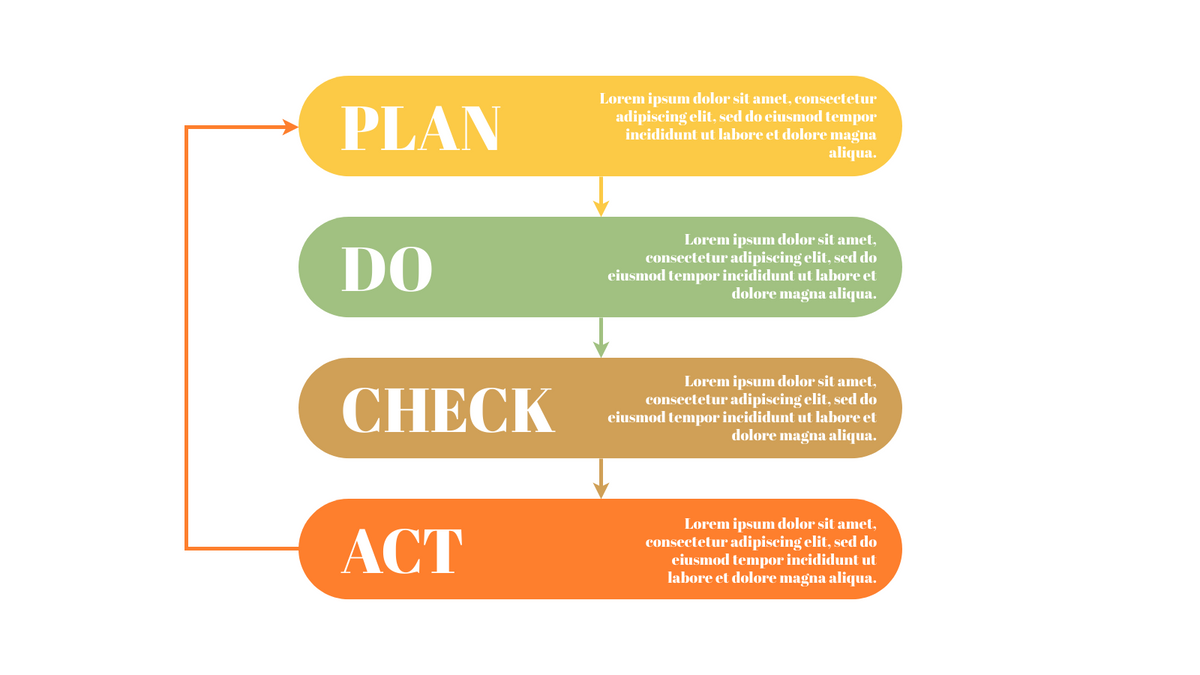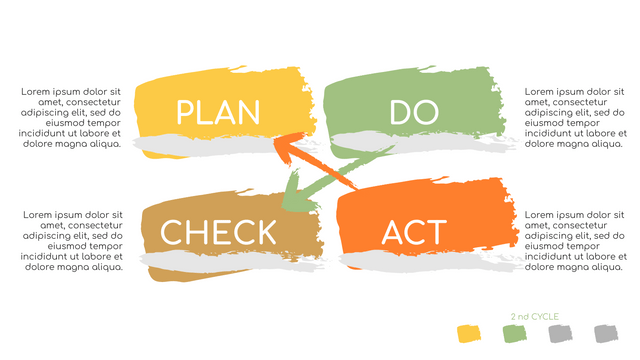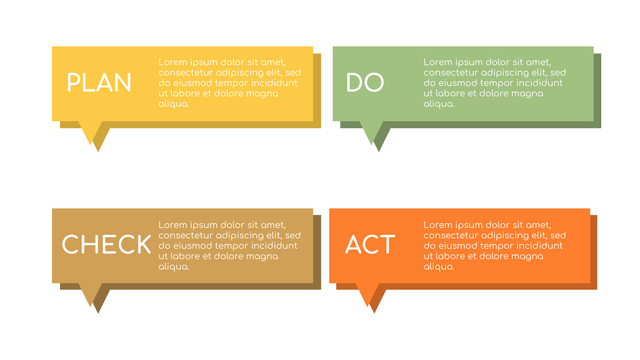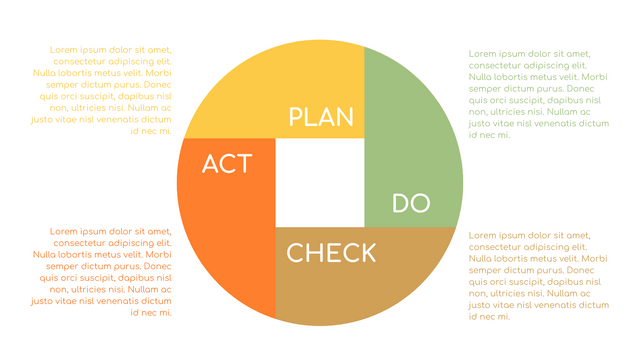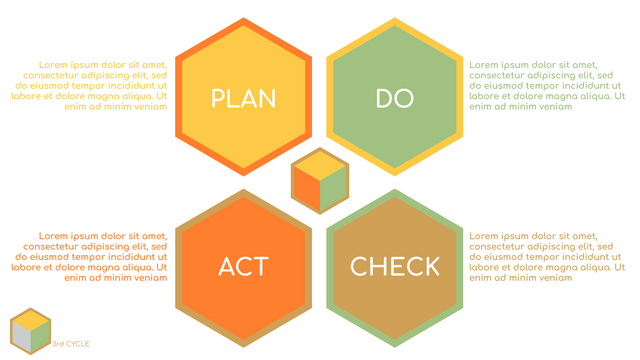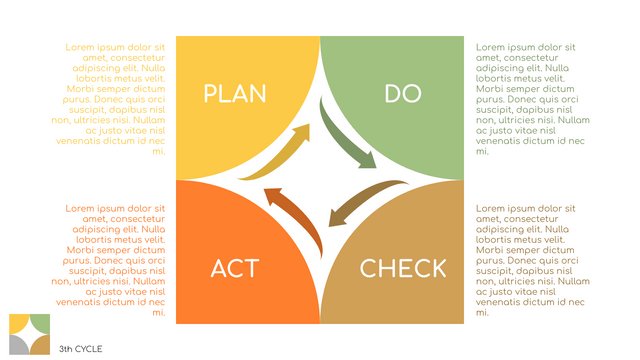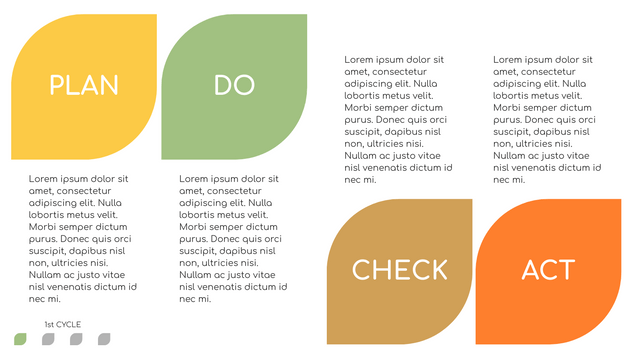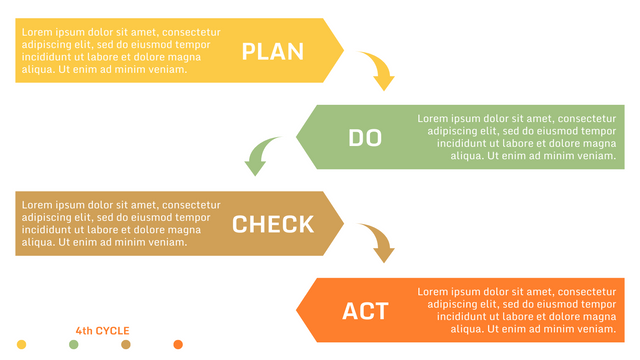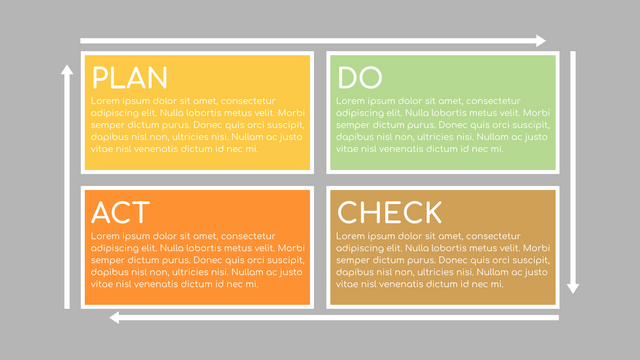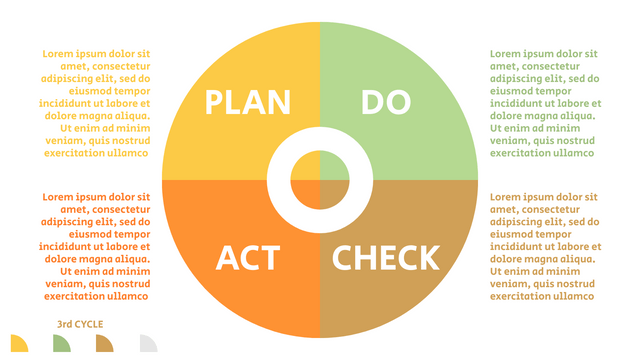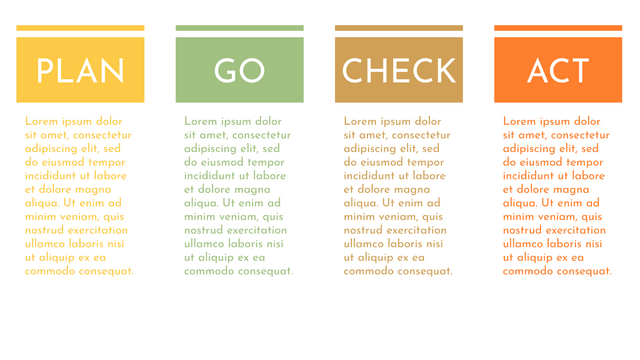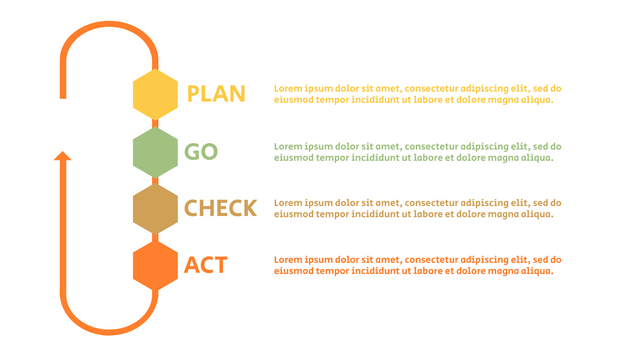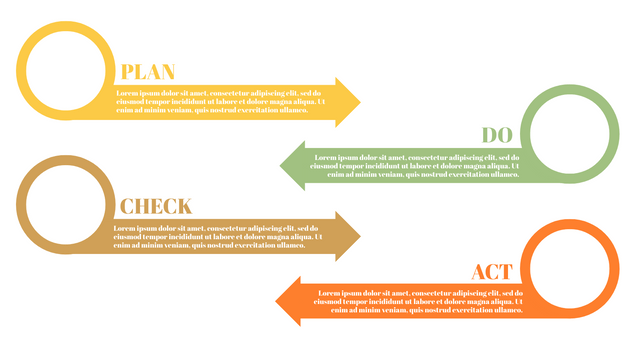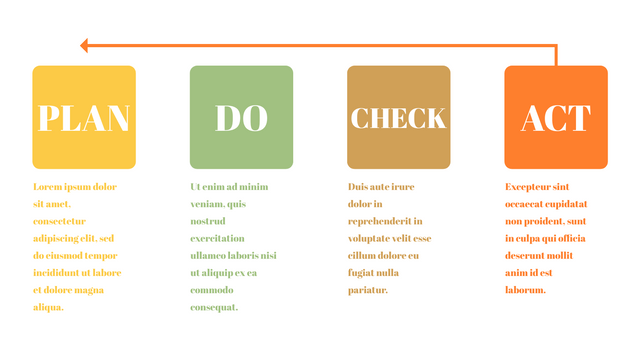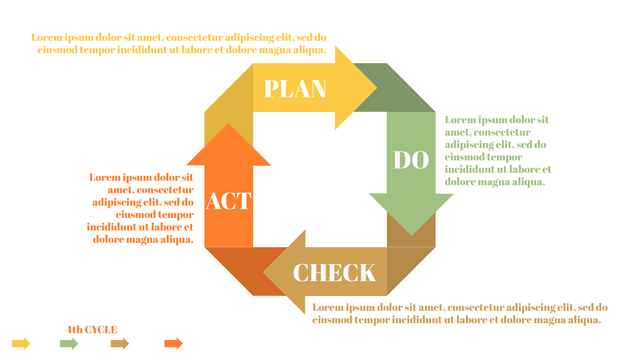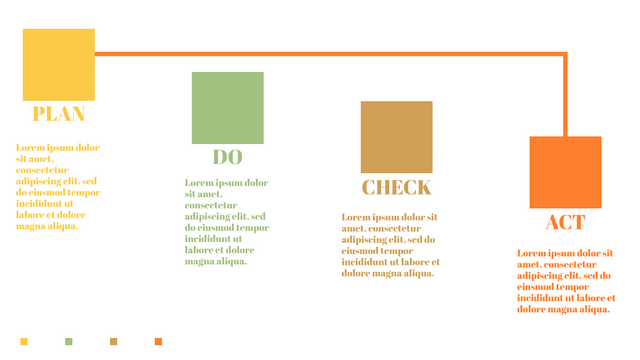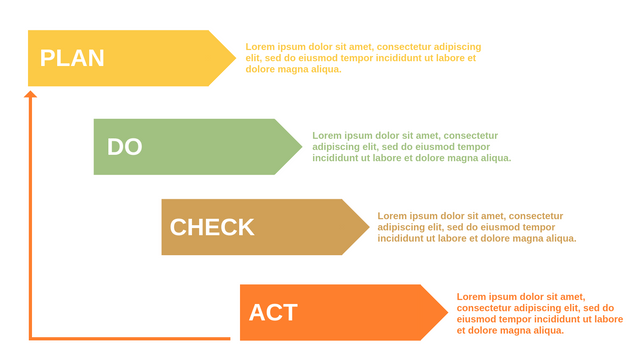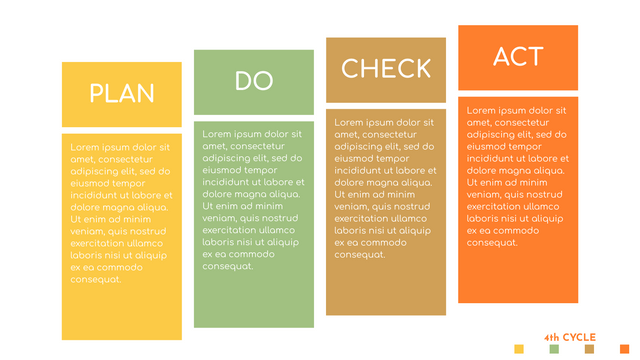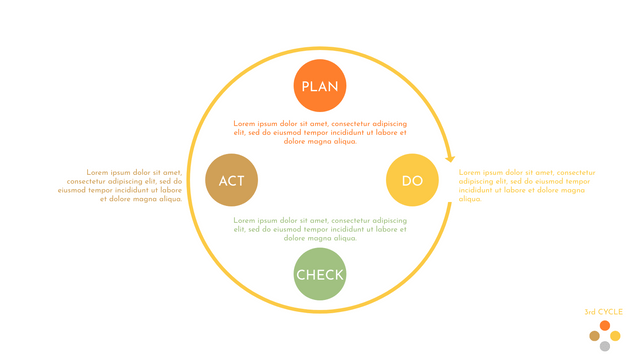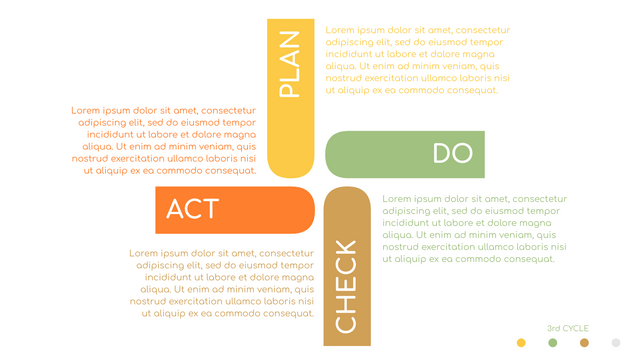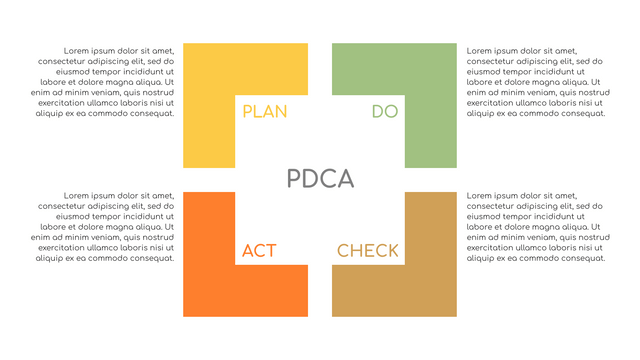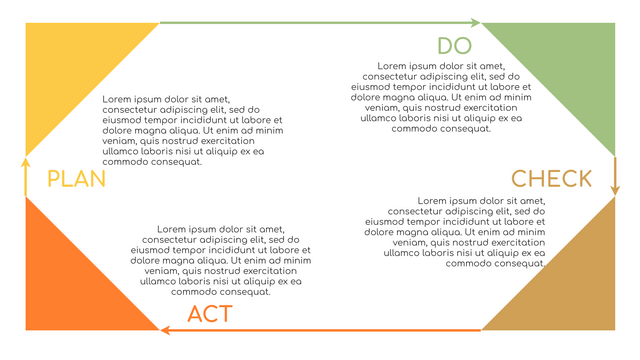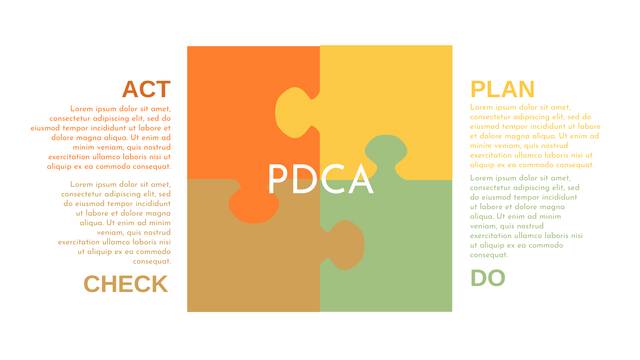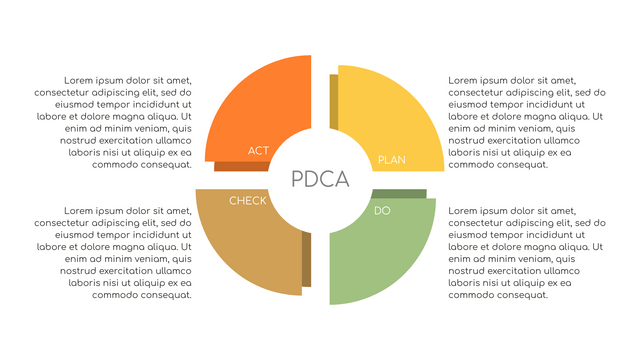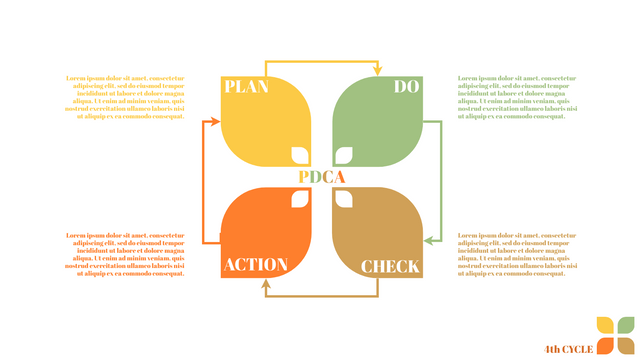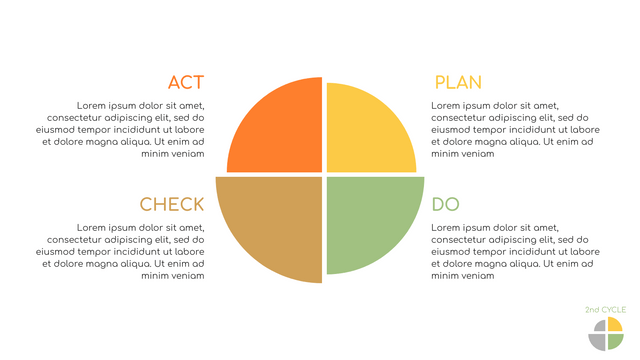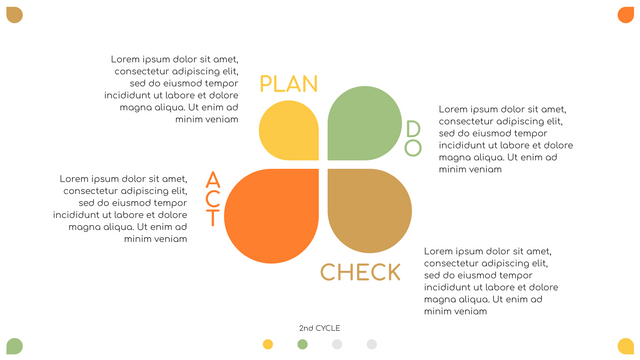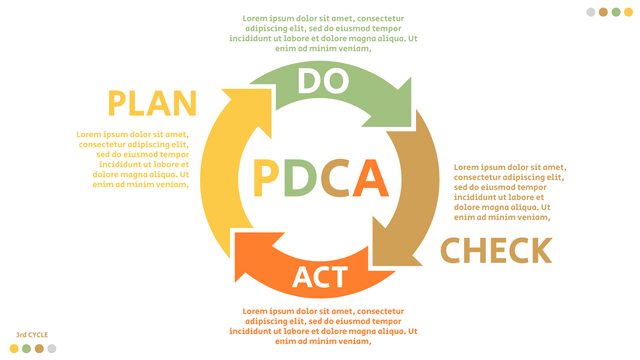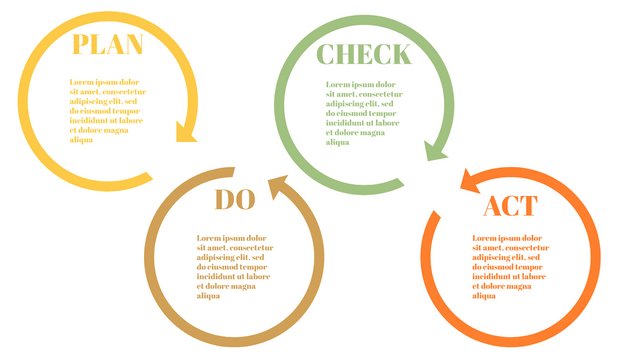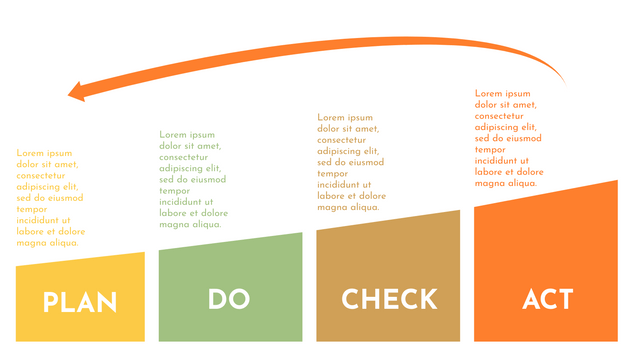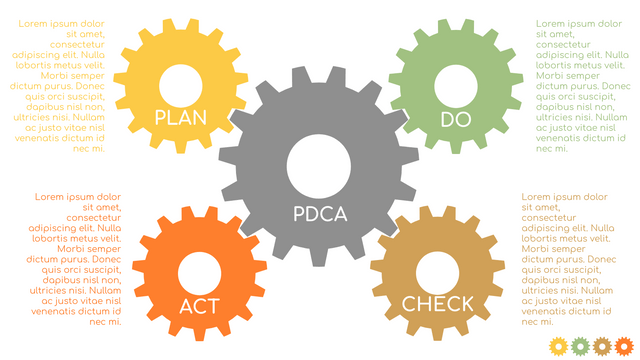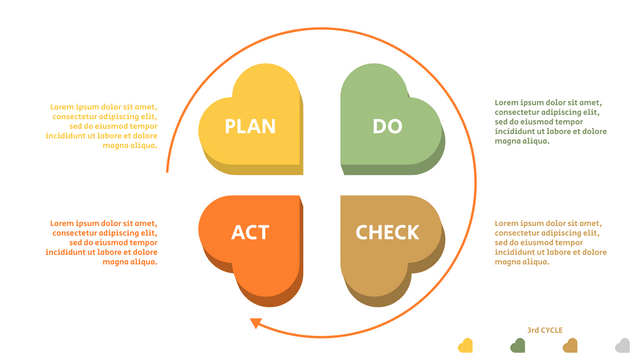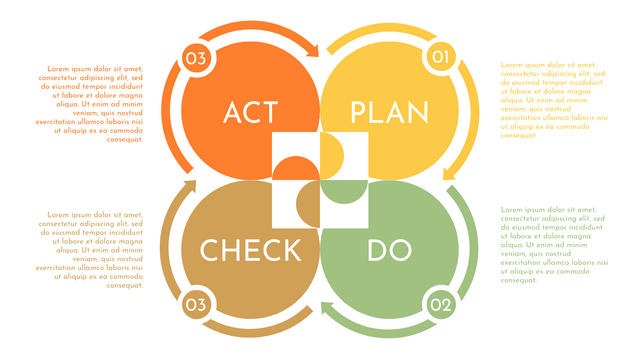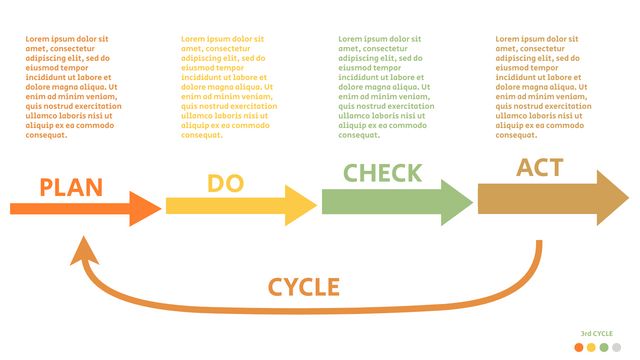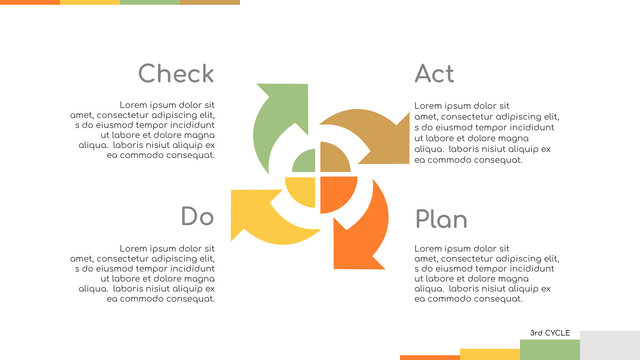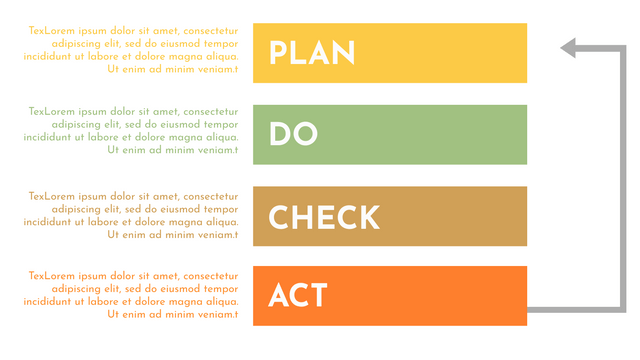The plan Plan-Do-check-Act (PDCA) cycle is an iterative four step problem solving technique used to improve business processes. The cycle was first developed by American physicist Walter A. Shewhart in the 1920s. This method was popularized in the 1950s by Dr. W. Edwards Deming, a pioneer in quality control, and the term "Shewhart" cycle was first coined after his teacher. During World War II, Deming realized that the PDCA cycle could be used to improve American production processes.
The PDCA cycle consists of four phases: Plan, Do, Check, and Action.
Plan: Analyze and predict results: Determine the root cause of the problem. Plan ahead for changes
Do: Implement the plan and take small steps in controlled situations: Carry out the change or the test, preferably in a pilot or on a small scale.
Check: Examine, study results: Check to see if the desired result was achieved, what or if anything went wrong, and what was learned.
Act: Take action to standardize or improve the process: If the result was not as desired, repeat the cycle using knowledge obtained from the previous cycle.
It's a never-ending cycle, but at some point you need to start. Maybe you can start with the third step - "check" as the first attempt, "check" what the problem is and what you want it to be? The difference between the actual and expected results will help you decide what action to take to start your first PDCA attempt.
The Philosophy of PDCA
PDCA is an iterative method, each repetition will produce different results. In turn, these results accumulate over time in each iteration of its continuous cycle. In fact, after one cycle of PDCA, each use of PDCA will bring different results, or it is likely to gradually form a more complementary result. Through the continuous use of PDCA, the company has a greater opportunity to stand out from the industry.
